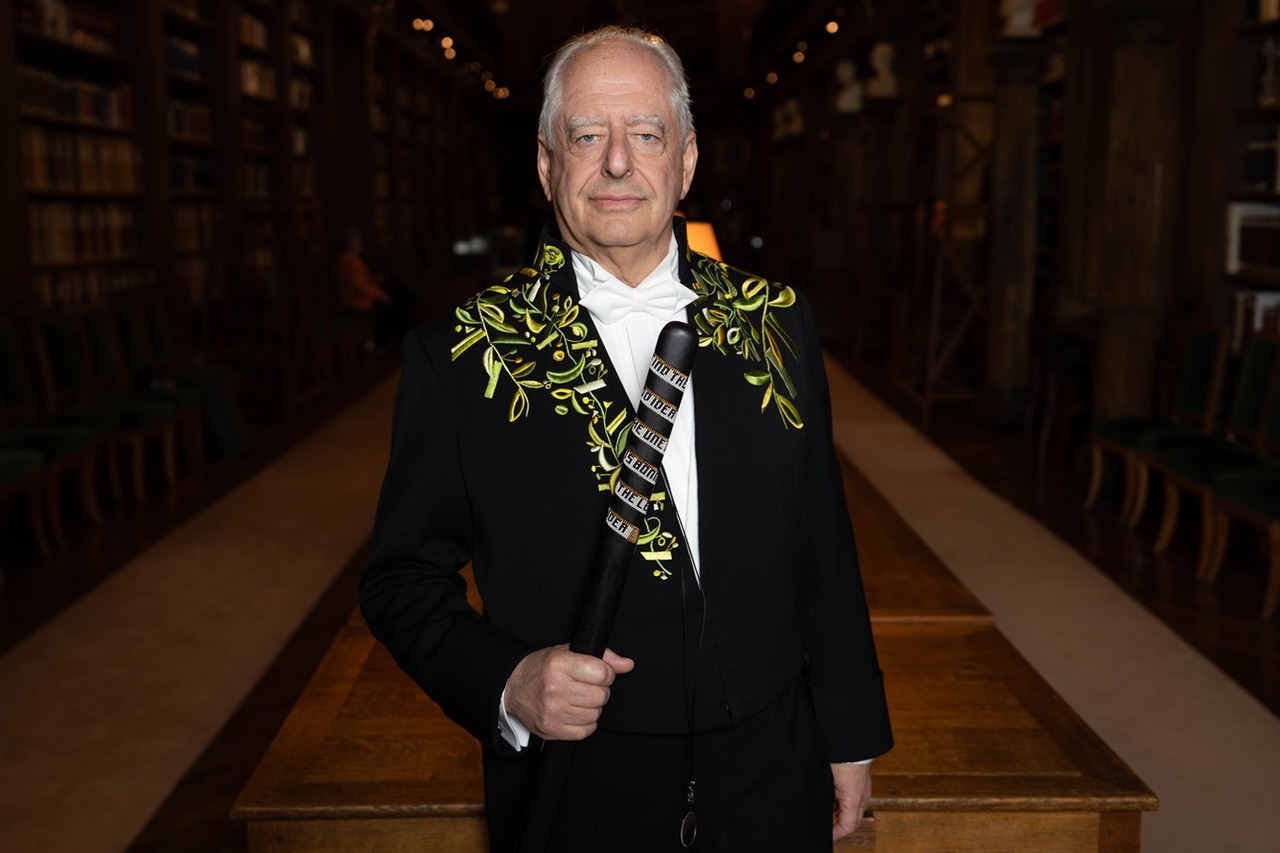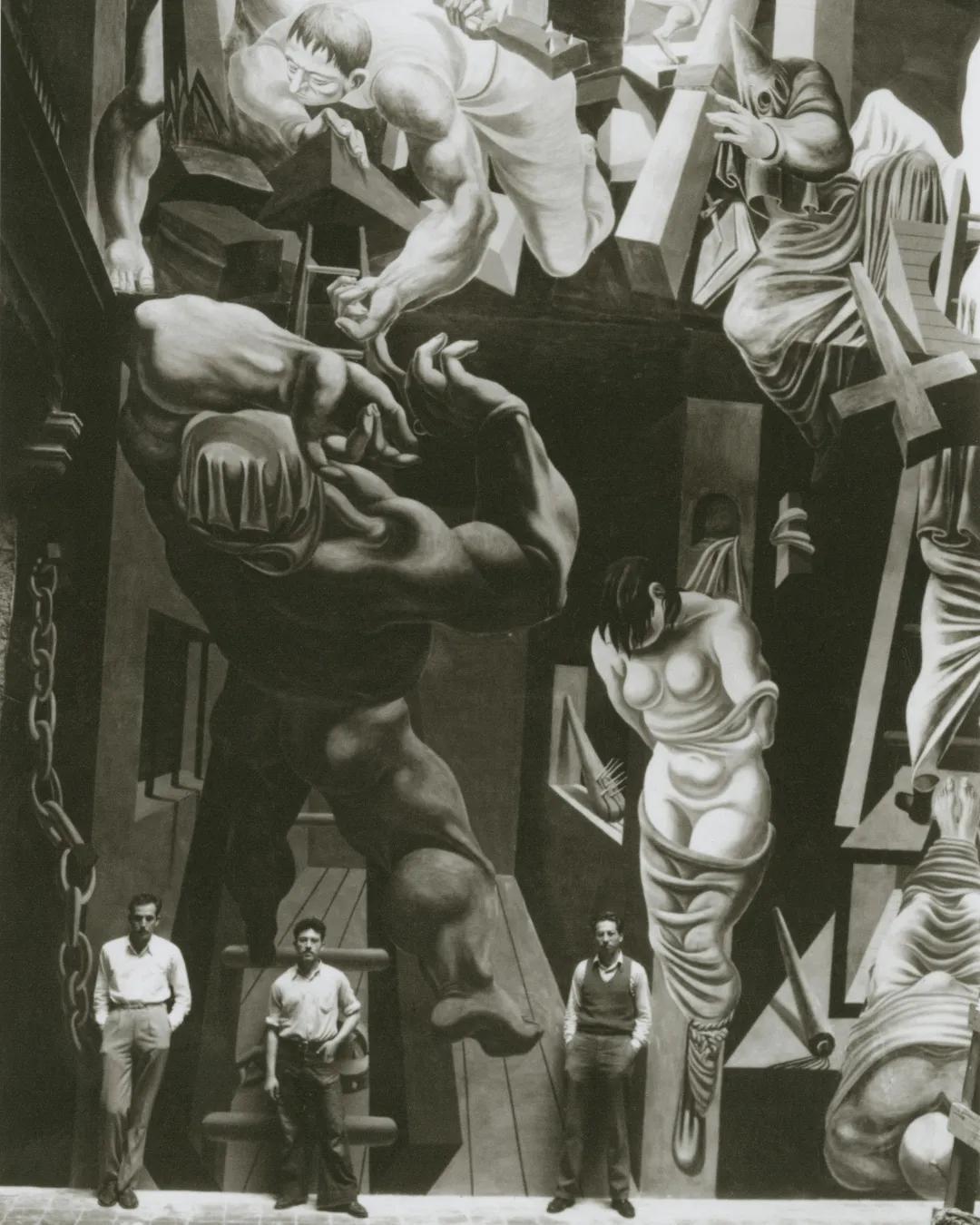Welcoming Hélène Delprat to Hauser & Wirth

Hélène Delprat in her Paris atelier, 2023. Photo: Emir Eralp
Welcoming Hélène Delprat to Hauser & Wirth
We are proud to announce representation of French artist Hélène Delprat, in collaboration with Galerie Christophe Gaillard. Over the past four decades, Delprat’s multifaceted practice has engaged the human condition as its focus, exploring life and death in an oeuvre that includes painting, drawing, photography, sculpture, video, theater, interview projects and installations. Oscillating between fiction and documentary, humor and melancholy, Delprat’s works together comprise a sprawling constellation of references to literature, film, radio, philosophy, internet databases, recorded national histories and canonical art history.
Likened to an iconologist, she distils eclectic sources of inspiration into a miraculous inventory—a world both fortuitous and deliberate, beautiful and grotesque, where themes of memory, identity, recording and legacy coalesce to remind us that the past is a construction and the present is fleeting.

Hélène Delprat, Les (fausses) conférences, 2011. DV film black & white, 58 mn © Hélène Delprat, ADAGP, Paris, 2023. Photo: Rebecca Fanuele, ADAGP, Paris, 2023

Hélène Delprat, Les conférences des oiseaux, dessin radiophonique, 2011 © Hélène Delprat, ADAGP, Paris, 2023. Photo: Rebecca Fanuele, ADAGP, Paris, 2023
After finding success in the 1980s and 1990s for a distinctively primitive style of figurative painting, Delprat turned her focus to video, theater, installations and projects for radio. In the late aughts, she returned to her painting practice, which has since been shaped by an encyclopedic research process to accumulate a remarkable archive of sources she records across various mediums, including her online blog of images and writings, ‘Days.’ Mining those archives, Delprat’s recent paintings are characterized by decontextualized images and texts; her seemingly non-sensical narratives induce viewers to draw their own conceptual associations and locate provocative parallels between her different works. Replete with paradoxes, ambiguities, humor and self-deprecation, Delprat’s artistic language is uniquely her own.
‘On the eve of inaugurating Hauser & Wirth’s first gallery space in Paris, we are thrilled to announce our collaboration with Hélène Delprat, Hélène’s work defies easy categorization,’ says Marc Payot, President, Hauser & Wirth. ‘It ignores conventional boundaries between visual typologies and expands what it means to be an artist who has inherited centuries of cultural history and received knowledge in a world where such things evaporate too fast and too easily. She draws upon that maelstrom to make art that combines humor and sadness with exquisite intelligence. The great diversity within Hélène’s oeuvre speaks to human experience in the world right now. And in its daring, her practice aligns with many other boundary-breaking multidisciplinary artists in our program. We are honored that she has joined our gallery’s family and look forward to sharing Hélène’s work with ever wider audiences worldwide.’
Delprat’s first exhibition with Hauser & Wirth, organized with Olivier Renaud-Clément, will open in January 2024 at Hauser & Wirth Paris, following the inauguration of the gallery. A new work by the artist, ‘L’apparition’ (2023), will be presented in the gallery’s booth at Paris+ par Art Basel 2023.

Hélène Delprat, Peinture ayant été détruite par Göring en 1937 et reconstituée en 2016
2016 © Hélène Delprat, ADAGP, Paris, 2023. Photo: Rebecca Fanuele, ADAGP, Paris, 2023
About the artist
Hélène Delprat (b. 1957) lives and works in Paris. She graduated from the École Nationale Supérieure des Beaux-Arts. Between 1982 and 1984, she was a resident of the prestigious Villa Medici in Rome, where she presented the anonymous exhibition ‘Jungles et Loups’.
Returning to Paris, Delprat exhibited with Galerie Maeght for ten years from 1985, coming to prominence with her totemic, primitive style of figuration, seen in such early works as ‘Meurtre réversible (recto)’ (1983) and ‘La transe des guerriers loups’ (1983). After giving up gallery representation in 1995, she declared herself an ‘ex-French painter’ in the early 2000s, creating small gouaches containing the words ‘Where is the painting? (WITP) It must be this Way’ or ‘Another failure, How not to paint by painting?’. These works would signal the beginning of a journey to explore everything that is not painting, without ever relinquishing her practice.

Hélène Delprat, La décomposition de nos ennemis, 2020 © Hélène Delprat, ADAGP, Paris, 2023. Photo: Rebecca Fanuele, ADAGP, Paris, 2023

Hélène Delprat, Un peu genre Christian Bérard, 2020 © Hélène Delprat, ADAGP, Paris, 2023. Photo: Rebecca Fanuele, ADAGP, Paris, 2023
In the subsequent years, Delprat devoted herself to work in video, theatre, installations and creations for radio. Immersing herself in literary, filmic and documentary sources, the artist focused upon non-painterly mediums which reflected the plurality of forms her extensive research could take—a diversity that extended to her ‘Days’ blog, fake interviews and radio drawings. Video works such as ‘Les (fausses) conférences’ (2011) offer up an array references, from astronaut Buzz Aldrin to the Greek writer Lucian of Samosata, interspersed with self-conducted interviews. Less filmic is Delprat’s ‘W.O.R.K.S & D.A.Y.S’ (2005), a visual journal or, as the artist describes it, ‘a notebook,’ citing influences as broad as Ovid’s Metamorphoses and the writings of Pliny the Elder.
Delprat’s sojourns into the unknown via deep research would eventually inform her return to painting in the late 2000s. Her artistic output has remained rooted in her infinite curiosity and penchant for gathering information from the world before and around her: ‘Intellectually, I start from everything I see’ she says, ‘... there is no prep work, except all of this food, all this reading, all these curiosities, all the photos that I take.’ The figures in her recent paintings, whether animal or human, are suspended upon hazy, multi-colored backgrounds, sometimes flecked with gold or intricate patterns. They exist in dream-like compositions evocative of the way memories appear and dissolve and reconfigure with their own illogical logic.

Hélène Delprat, Marcello Dove Sei ???, 2021 © Hélène Delprat
Creating a space where fiction and documentary intermingle, Delprat’s multi-layered paintings are placed in an anachronistic framework. Her elusive characters and objects eschew context, resisting a single organized narrative. In paintings such as ‘Cymbalum Mundi-Pamphagus’ (2013), Delprat depicts Pamphagus, a dog from the 16th-century French text Cymbalum Mundi, as a well-groomed, contemporary French poodle. Other paintings take on a more ambivalent or disturbing aspect as Delprat addresses violent parts of human history. ‘Peinture ayant été détruite par Göring en 1937 et reconstituée en 2016’ (2016) summons tragedy and death through silhouettes of Nazi soldiers juxtaposed with floating cartoon faces that frown and smile. Similarly, the recent canvas ‘La décomposition de nos ennemis’ (2020) evokes images of war, a recurring theme in Delprat’s work and a metaphor for the act of painting as a battle against time.
In addition to Delprat’s first notable solo exhibition, ‘Jungles et Loups,’ at the Villa Medici in 1984, her work has been the subject of many solo exhibitions, including Galerie Christophe Gaillard, Paris (2014, 2017, 2020); La Maison Rouge, Paris (2017); Musée des Beaux Arts de Caen (2018); Kunsthalle Giessen, Germany (2020); Musée Marmottan Monet, Paris (2022); Museu Picasso, Barcelona (2023). In 2021, Delprat’s work was part of a group presentation ‘Sans titre’ from the Pinault Collection at the Punta Della Dogana in Venice, Italy. In 2021, the artist was commissioned to create the outdoor fountain ‘Marcello Dove Sei ???,’ at La Résidence – Le Tremblay, located in the town of Orgères, France.
Related News
1 / 5




